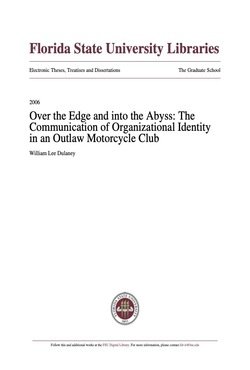By William Lee Dulaney
The present study is an ethnographic analysis of the communication of organizational identity in an outlaw motorcycle club. Two goals direct the present study. The first is to present a brief history of outlaw motorcycle clubs that extends current research back nearly 50 years prior to the current published record. In so doing, the study clarifies the origins of the term "outlaw" as it relates to motorcycle clubs. The second and major goal of the study is to explore how an outlaw motorcycle club establishes and communicates an organizational identity. To this end, the study offers an emic (insider) understanding from the perspective of 28 members of a Tallahassee, Florida-based chapter of an international outlaw motorcycle club. A dearth of scholarly research exists addressing outlaw motorcycle clubs. The current historical record can be seen as incomplete due to the lack of understanding of how the motorcycle first diffused as a mode of transportation and then as a locus of organization. Likewise, current cultural research is limited to etic (outsider) understandings, perhaps due to the difficulty in gaining entrée to closed or secret societies. Participant observations were conducted from May through June 2004 across the United States, with the majority of data originating from the Southeast United States in general, and the northern Florida Panhandle in particular. Historical research involved examining archives of the American Motorcyclist Association; print media dating back to 1901; life histories of long-time outlaw motorcycle club members; and organizational records of the outlaw motorcycle club
-
observed during the study. Using primarily Turnerian (1967) analysis of organizational symbols and rituals, the study examines the various acculturation processes involved in a novice becoming a member of an outlaw motorcycle club. Systems thinking frames the interpretation of how these symbols are then used by motorcycle clubs to create a system.
Tallahassee: Florida State University, 2006. 190p.


